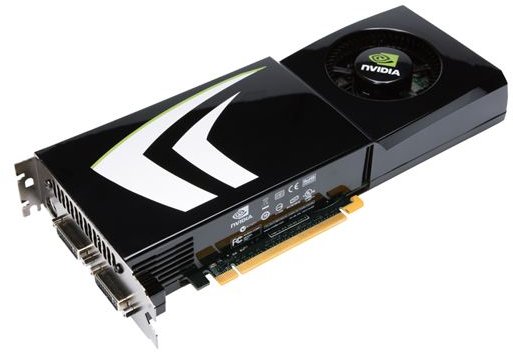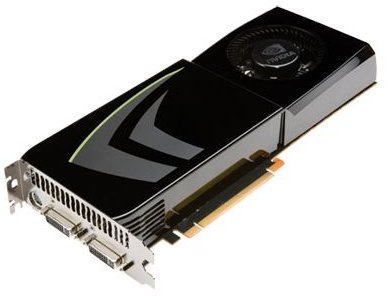Best 3 Cards For SLI And CrossFire: Radeon 4830
Power In Numbers
Since its introduction, multi-GPU graphics solutions like SLI and CrossFire have gained a reputation as being more about flash then actual performance. Due to immaturity of both the drivers and of the hardware, multi-GPU graphics scaled poorly. You might purchase two cards, but find that adding the second only increased performance by 40%, or even less. SLI and CrossFire also ran into problems with software support, as many developers did not take the time to make their games compatible with multi-GPU solutions.
But times change. While SLI and CrossFire still have dark clouds over their heads, the truth is that most of the old problems have been banished. Many multi-GPU solutions available today scale extremely well. In addition, support is wide-spread. Any major graphics intensive game released supports both CrossFire and SLI, and those games which don’t support multiple GPUs are typically those games which can’t even tax a single GPU. The biggest change, however, is in the prices of video cards. Once upon a time a CrossFire or SLI setup could run you over $1000 bucks, but now that competent cards can be purchased for well under the $200 dollar mark, using SLI and CrossFire is much cheaper.
The three cards chosen below are great cards to look at if you’re interested in running SLI or CrossFire. They have been chosen not only because they perform well, but because they offer value benefits over single-cards solutions. Keep in mind when looking at these cards that you will need a machine with a good, beefy power supply and a motherboard that can support SLI, CrossFire, or both. These features can cost more. However, considering the popularity of power supplies well over 500 watts and the wide-spread availability of motherboards with multiple PCIe slots, these obstacles are not as large as they once were.
Radeon HD 4830
The small fry of the 48xx Radeons, the Radeon HD 4830 is often forgotten. This is unfortunate, because it is a great card. I did not, in fact, even realize how great it was until I began researching for this article, and I discovered that Radeon HD 4830s have now in some cases dipped below the $100 dollar barrier. Considering that the Radeon 4830 is just a slightly handicapped version of the Radeon HD 4850, that is a stunning price. By itself, a Radeon 4830 has the power to run almost any game at high frame-rates on a 22" monitor, and the fact that a video card capable of that can now be purchased for just under $100 dollars is a testament to how rapidly and severely the price war between Nvidia and ATI is unfolding.
With a price that low, the Radeon HD 4830 instantly becomes a candidate for CrossFire applications. Two of these will only set you back $180 dollars, which is about how much a 512mb version of the Radeon 4870 will cost you. But benchmarks show that the Radeon HD 4830 in CrossFire is at worst on par with a single Radeon HD 4870, and the best benchmarks indicate that these two little cards can give the GTX 280 a run for its money. That is a stunning result, considering how much more the GTX 280 costs.
There is only one major compromise. The Radeon HD 4830 has only 512mb of RAM, and the few 1GB models have a cost sufficently high that buying one would negate the value advantage of the purchase. This means that while the cards may have the processing power to render a scene, the RAM may be insufficient for storing that data as it is sent off to the display. Because of this, you should steer clear of the Radeon HD 4830 Crossfire if you wish to play games at high resolution with AA turned up.
Nvidia GTX 260 (216 Core)

When the GTX 260 came out, it was considered to be a bit of a bore. The performance was not any better on average than what could be found on a Radeon HD 4870, but the starting price was much, much higher. Nvidia quickly came to its senses, however, and Nvidia has since taken a slash-and-burn approach to prices as they pursue ATI’s less expensive cards. The results have been massive price drops, as the GTX 260 now can be purchased for as low as $179.99. In addition to the price cuts, Nvidia released as second version of the card in an attempt to overpower ATI on the performance front. The new version, called the GTX 260 Core 216 (or a variation thereof) has more of Nvidia’s “stream processors” then the original version, increasing overall performance.
Nvidia’s hard work has paid off, and the GTX 260 is now considered to be a very worthy competitor against the Radeon HD 4870. The performance difference between the cards is small, and varies from game to game, making the choice between the two cards a matter of personal preference more than anything else. However, when you add in a second card, and pit the GTX 260 and the Radeon HD 4870 head to head in SLI and CrossFire configurations, the GTX 260 unveils its power.
The scaling of the GTX260 is stunning, with most measurements suggesting that it is over 80%. That is the highest we recall seeing for any multi-GPU configuration, period. Since the cards scale so well in SLI, the numbers they generate are staggering, with most tests suggesting that two GTX 260s are by far faster than a GTX 280 or a Radeon HD 4870X2. In fact, their performance is roughly on par with a GTX 295, which makes sense, because the GTX 295 is essentially two GTX 260/280 class chips placed together on a board. But by buying the GTX 260s, you can save over $200 dollars, as the GTX 295 currently will set you back well over $500 bucks.
Nvidia GTX 285

Another Nvidia nod? Yes, thats the case. It is worth stating that the reason the ATI cards only get the budget nod with the Radeon HD 4830 is because the scaling of CrossFireX does not seem nearly as good as that of Nvidia’s SLI. This is a weakness, considering that ATI relies entirely on CrossFireX to power its high-end graphics cards. There is not anything in the ATI line-up that can compete with SLI GTX 260s. The GTX 285, then, is just pouring salt in the wound.
However, it must be said that the GTX 285 isn’t a great value. With a base price of around $349 dollars, the GTX 285 costs only a little less than the price of two GTX 260s, and two GTX 260s will certianly put a single GTX 285 to shame. Two GTX 285s is going to run the cost of your mutli-GPU solution up to around $700 dollars, which a massive amount of dough. You could buy an entire gaming machine for that much money. By now the 295 SLI on a stick option is cheaper.
But the GTX 285 SLI has to be mentioned for one reason. The performance is absolutely outrageous. It is, in fact, hard to imagine why anyone would even need to use GTX 285 SLI. At a resolution of 2560x1600 with most of the details turned on, the GTX 285 SLI can run Far Cry 2 at over 70 frames per second. That makes it literally the fastest graphics solution that can possibly be purchased, with the possible exception of Tri- and Quad-SLI configurations, which are rarely benchmarked thoroughly and therefor hard to judge.
Sure, the GTX 285 SLI is expensive. But if you’re looking for the best you can buy, don’t waste your time looking at anything else. The GTX 285 in SLI wears the performance crown for now, and probably will continue to do so until Nvidia releases new video cards using an updated graphics chip.
